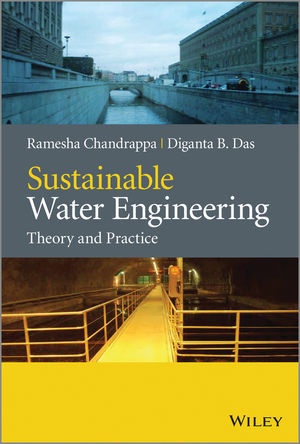Read more
Combining theory and practice from the developing and developed worlds with high- and low-tech, high- and low-cost solutions, this book discusses fundamental and advanced aspects of water engineering and includes water resource issues including climate change, water scarcity, economic and financial aspects.
List of contents
Preface xi
Abbreviations xiii
Glossary xvii
1 Water Crisis 1
1.1 Water Resource Issues 6
1.1.1 Water Footprint 8
1.2 Climate Change and Its Influence on Global Water Resources 9
1.3 Protection and Enhancement of Natural Watershed and Aquifer Environments 12
1.4 Water Engineering for Sustainable Coastal and Offshore Environments 12
1.5 Endangering World Peace and Security 13
1.6 Awareness among Decision Makers and the Public across the World 15
1.7 Criteria for Sustainable Water Management 16
1.8 Water Scarcity and Millennium Development Goals 18
1.9 Lack of Access to Clean Drinking Water and Sanitation 19
1.10 Fragmentation of Water Management 20
1.11 Economics and Financial Aspects 22
1.11.1 Water Treatment and Distribution 24
1.11.2 Wastewater Treatment, Collection and Disposal 27
1.12 Legal Aspects 28
References 30
2 Requirements for the Sustainability of Water Systems 35
2.1 History of Water Distribution and Wastewater Collection 38
2.2 Integrated Water Management 40
2.3 Sewerage Treatment and Urban Pollution Management 44
2.4 Conventional Water Supply 45
2.4.1 Features 49
2.4.2 Capacity and Pressure Requirements 50
2.4.3 Design and Hydraulic Analysis of Distribution System 52
2.4.4 Unsustainable Characteristics 55
2.4.5 Sustainable Approach 64
2.5 Conventional Wastewater Collection Systems 71
2.5.1 Features 71
2.5.2 Unsustainable Characteristics 77
2.5.3 Sustainable Approach 79
References 80
3 Water Quality Issues 83
3.1 Water-Related Diseases 84
3.1.1 Transmission Vectors 85
3.1.2 Field Testing and Monitoring 85
3.1.3 Village-Level Monitoring 89
3.2 Selection Options for Water Supply Source 89
3.2.1 Spring Capping 91
3.2.2 Simple Tube Wells 93
3.2.3 Hand Pumps 95
3.2.4 Rainwater Harvesting 95
3.2.5 Fog and Dew Harvesting 98
3.2.6 Snow Harvesting 99
3.3 On-Site Sanitation 99
3.3.1 Latrines 99
3.3.2 Septic Tanks 103
3.3.3 Aqua Privies 103
3.3.4 Oxidation Pond Treatment Systems 103
3.3.5 Storm Drainage 105
3.4 Water Quality Characteristics of Potable Drinking Water and Wastewater Effluents 110
3.4.1 Physical Parameters 110
3.4.2 Chemical Parameters 113
3.4.3 Solids in Water 127
3.4.4 Biological Parameters 139
3.5 Standards and Consents 147
3.5.1 Potable Water Standards 147
3.5.2 Wastewater Effluent Standards 148
3.6 Kinetics of Biochemical Oxygen Demand 149
3.7 Water Management for Wildlife Conservation 149
3.8 Water-Quality Deterioration 152
References 153
4 Fundamentals of Treatment and Process Design, and Sustainability 163
4.1 History of Water and Wastewater Treatment Regulatory Issues across the World 164
4.1.1 Low-Tech versus Hi-Tech 165
4.1.2 Low Cost versus High Cost 167
4.2 Design Principles for Sustainable Treatment Systems 168
4.2.1 Low Carbon 168
4.2.2 Low Energy 168
4.2.3 Low Chemical Use 172
4.2.4 Modelling of Treatment Processes to Attain Sustainability 172
4.2.5 Operation, Management, Financial, Socio-Economic Aspect 173
4.3 Preliminary and Primary Treatment 174
4.3.1 Screening 174
4.3.2 Coarse-Solid Reduction 174
About the author
Ramesha Chandrappa,
Karnataka State Pollution Control Board, IndiaDiganta B. Das,
Department of Chemical Engineering, Loughborough University, UK
Summary
Combining theory and practice from the developing and developed worlds with high- and low-tech, high- and low-cost solutions, this book discusses fundamental and advanced aspects of water engineering and includes water resource issues including climate change, water scarcity, economic and financial aspects.

